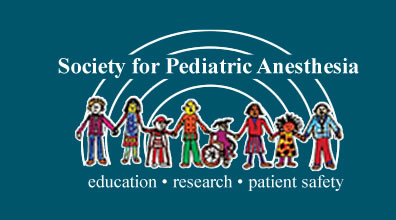CCAS Meeting Reviews
Morning Sessions I-III
Reviewed by Wilson Chimbira, MBChB, FRCA
Mott Children’s Hospital
University of Michigan Hospital and Health Systems
This was the Annual Meeting of the Congenital Cardiac Anesthesia Society (CCAS). Dr. Helen Holtby, the current President of the society, gave the meeting’s opening remarks. Dr. Wanda Miller-Hance gave the outline of the educational program. The entire planning committee should be commended for putting on an excellent program
 Session I: Basic science and practical application – moderated by Dr. Gregory Hammer
Session I: Basic science and practical application – moderated by Dr. Gregory Hammer
The first speaker was a world renowned cell-therapy researcher Dr. Doris Taylor (Texas Heart Institute). Her talk was amazing. She discussed the Creation of a New Heart: Science or Fiction? This was a brief look into the future of medicine, which is closer than you think. Her review looked at the use of stem cell therapy in cardiac disease from early ischemic heart disease through to end stage heart failure and cardiac transplantation. Finally, she spent some time talking about organogenesis and her work at the Texas Heart Institut, creating the perfect scaffold for organogenesis. The process involves decellularization, which strips the organ of cells but leaves the support structures intact and despite being acellular the blood vessel network is maintained. Once the scaffold has been created it can then be recellularized with stem cells to recreate a part, or all, of the functional organ; even a beating heart. Unfortunately, the process requires a large number of stem cells. Organogenesis and transplants for simple structures such as trachea and bladder are already a reality.
The second speaker in the session, Dr. Peter Laussen (Sick Kids, Toronto), discussed Heart Failure in Children: Current Management strategies. This was a nice overview of the pathophysiology of heart failure delving into the maturational differences between neonates and adults and followed by an overview of management of available pharmacotherapy including newer agents such as levosimendan and seralaxin. Levosimendan has been touted as the ‘ideal inotrope in heart failure’ due to its ability to increase intracellular sensitivity to calcium without increasing intracellular calcium levels and its ability to increase contractility without increasing myocardial oxygen consumption. Levosimendan via its action on ATP-sensitive potassium channels also causes coronary and peripheral arterial vasodilation. Unfortunately, it does have some limitations in that it is expensive and it is unclear whether its use should be geared to acute or chronic heart failure.
Session II: Practical aspects of cardiac anesthesia practice: A potpourri – moderated by Dr. Suanne Daves
Dr. Laura Diaz (Children’s Hospital of Philadelphia) opened the session with her talk titled Patient with a Berlin Heart Needs Non-Cardiac Surgery: What should I be concerned with? The use of the Berlin Heart EXCOR pediatric has been increasing steadily from 13 cases in 1999/2000 to 377 implantations in 2011/2012 and most of the implantations have been in children less than one year of age. The Berlin Heart is used as a bridge to transplant in patients with cardiac failure that has failed medical management. It can be implanted as a LVAD, RVAD or even a BiVAD. Unfortunately, patients with a Berlin Heart may need multiple post implant surgeries, some related to the VAD, like a pump change, or unrelated such as central line placement.
Dr. Diaz outlined preoperative considerations such as medical history and current issues, medication and anticoagulation protocols, laboratory studies and blood availability as well as the important question of how to transport the patient. During induction of anesthesia the most important principles are to maintain SVR and intravascular volume status as these are not well tolerated. The management of hypotension that commonly occurs during induction is best done using a combination of fluid boluses and phenylephrine (Cave et al Ped Anesth 2010). Inhaled nitric oxide should be considered during maintenance due to the potential for RV strain/failure in these patients. Inadequate perfusion or circulatory arrest should prompt pump evaluation for inflow/outflow cannula obstructions as well possible disconnections or even thrombosis .If there is battery failure, it may be necessary to use a hand crank until power is restored. CPR and defibrillation are not contraindicated. The Berlin Heart website, www.berlinheart.de, is a great resource for anyone taking care of these patients.
Session II continued with Dexmedetomidine: What is its role in the pediatric cardiac patient? presented by Dr. Larry Schwartz (Children’s hospital of Colorado). Dexmedetomidine isn’t a panacea but a useful tool in the management of patients with congenital heart disease. It is an α2-adrenergic receptor agonist that exerts its effects on many organ systems. In the central nervous system it causes sedation and anxiolysis and decreases cerebral blood flow and cerebral metabolic rate. It has no effect on intracranial pressure and appears to preserve SSEP’s and MEP’s during neuromonitoring. The cardiovascular effects are mediated through central and peripheral adrenoreceptors commonly leading to hypotension and bradycardia but hypertension may ensue with high doses. One big advantage is that airway patency, ventilation and saturation are well preserved.
Although this drug has FDA approval in adults (December 1999), it has not been approved in children. Nevertheless, there is evidence in the literature that pediatric uses include sedation (preoperative, procedural and ICU) and anesthesia management during surgical repair in CHD as well as during cardiac catheterization. Dexmedetomidine may also play a role in organ protection and has been shown to decrease inflammation in septic rats. In addition, it may play a role in neuroprotection by inhibiting isoflurane induced apoptosis. (Wu, Mediators Inflamm, 2013, Sanders, Anesthesiology 2009,110,1077-85).
Dr. Jane Heggie (Toronto General Hospital) concluded the session with the topic Young Adult with failed Fontan circulation and symptomatic tachycardia: What is your next move? This was a great overview of the growing problem of caring for adults with congenital heart disease (ACHD). The continued growth of centers of excellence has created an expanding population of young adults with congenital heart disease. Fontan survivors represent the extremes of ACHD and, as these patients age and develop heart failure, they may seek anti-arrhythmic therapy to improve their quality of life.
Most patients with hypoplastic left heart syndrome and a systemic morphological right ventricle will develop heart failure in the third or fourth decade and may present for Fontan conversion with concomitant arrhythmia surgery or even heart transplant. The problem faced in caring for patients with lateral tunnel Fontan and extracardiac connection with arrhythmias is there is no access to the atria or ventricles for transvenous pacing or EP mapping and ablation. However, mapping and ablation can successfully be achieved by transbaffle access which is unfortunately fraught with its own problems. These procedures are lengthy and often need general anesthesia and may be associated with adverse events such as hemoptysis, kidney injury, persistent shunting across baffle and even death. Even simple cardioversions in these patients may be a challenge as there is no ability to float a temporary pacing wire in the event of developing a bradyarrhythmia.
Unfortunately, these patients may be lost to follow up and may present for the first time in years to a community hospital with an arrhythmia. As the anesthesia care provider it is essential to have a well thought out plan of what to do if things go wrong. It is important to have access to transcutaneous pacing at the onset of the cardioversion and be prepared for resuscitation with good intravenous access and appropriate cardiac medications. Congenital cardiac anesthesiologists must show leadership in consulting and advising the adult anesthesia community in providing care for this rapidly expanding complex population.
Session III: Insightful Picks
Dr. Andreas Loepke (Cincinnati Children’s Hospital) reviewed anesthetic effects on the developing brain in patients with congenital heart disease. In recent years there have been over 300 articles and numerous abstracts that confirm that all clinically used sedatives and anesthetics induce neurotoxicity in animal models. Learning and memory may be more of an issue than neuroapoptosis in the developing brain.
Dr. Richard Levy (Children’s National Medical Center) talked about Surgical Repair of Coarctation of the aorta and the spinal cord. He presented work by Awad et al (Anesthesiology 2010) who developed a mouse model for spinal cord ischemia induced by aortic cross clamping. Prolonged ischemia resulted in gait abnormalities distal to the level of the cross clamp. He raised the question of whether subclinical injury may be occurring in our infants and children during coarctation repair. Dr Levy suggested paralysis as a marker of cell injury maybe too extreme an endpoint and maybe we should be looking for something else. Celermajer et al (Heart 2002) found that up to 75% of all patients undergoing coarctation repair will have systemic hypertension 20-30 years post op and maybe blood pressure regulation is the measure we need to demonstrate subclinical injury.
Dr. Alexander Mittnacht (Mount Sinai Medical Center) concluded the session looking at literature related to blood transfusions in patients with congenital heart disease. Howard-Quijano et al (Anesthesia Analgesia 2013) showed higher blood transfusions were associated with worse outcomes in pediatric heart transplant patients. This was a well-designed paper very relevant to our current practice. Adult literature suggests that there is increased morbidity and mortality with blood transfusion and evidence is growing to suggest the same in children. Unfortunately, transfusion of blood products is common in congenital heart surgery and transfusion thresholds are poorly defined.
Although this was a good study, the question remains as to whether poor outcome is due to blood transfusion or excessive blood loss. Whitney et al (Pediatric Anesthesia 2013) utilized a transfusion algorithm that led to reduction in blood products transfused and a decrease in mortality. Dr. Mittnacht summarized that blood transfusion is potentially harmful and by utilizing a transfusion algorithm, routine administration can be avoided. However, there is no alternative to blood once the patient is bleeding.
Session IV,V, and VI
By Christopher Stemland, MD
University of Virginia Medical Center
Charlottesville, VA
Session IV (Poster Presentations)
The first poster presentation by J Hamrick et al (University of Arkansas) examined whether continuous end-tidal C02 monitoring in an animal model of cardiac arrest improves outcomes after return to spontaneous circulation. Asphyxiated piglets experienced no circulatory flow (6 minutes) followed by initiation of BLS and ACLS.
Groups were randomized to either resuscitation with end-tidal C02 monitoring or no end-tidal C02 monitoring. The investigators recorded mean arterial pressure, central venous pressure, and intracranial pressure after beginning resuscitation. The end-tidal group had better hemodynamics with CPR, better responsiveness to epinephrine, and was more likely to have return to spontaneous circulation. The investigators found no difference in markers of myocardial injury suggesting that chest compression delivery was similar between groups.
The second poster presentation(s) by Greene et al (Texas Children’s) described neuronal mapping using diffusion tensor imaging (DTI) in 75 neonates with congenital heart disease undergoing repair in the first 30 days of life. DTI tracks water movement through specific areas of the brain using the separate components of fractional anisotropy and apparent diffusion. This technology allows for mapping of brain microstructural development over time. N Greene et al obtained DTI images of these 75 neonates scheduled for surgical palliation preoperatively, seven days after surgery, and then 3-6 months after surgery to assess changes in brain microstructural array.
Interestingly, the impact of surgery/palliation on brain microstructure was more pronounced for neonates undergoing a two-ventricle repair rather than a single ventricle palliation. In a separate poster presentation, this group showed that post-conceptual age must be accounted for when comparing absolute values of these DTI images.
The third poster presentation by S Tew (Duke University) describes the natural history of platelet transfusion at their institution according to Aristotle Comprehensive Complexity score. Over a five year period, the authors retrospectively examined the anesthetic records of 977 patients under age 21 and analyzed the results according to Aristotle score. Tew et al found that higher complexity surgery (i.e., Aristotle Complexity level 4) results in the greatest ml/kg of platelets transfused as well as the lowest platelet nadir.
Session V: Clinical Practice
Dr. Bruce Miller (Children’s Healthcare of Atlanta) provided an excellent clinically relevant talk on Williams Syndrome. Williams Syndrome is a genetic disorder involving 15 genes on the long arm of chromosome 7 that codes for elastin. These patients are gregarious and have typical facial features of broad foreheads, wide set eyes, heavy cheeks, mandibular hypoplasia, and specific cardiac anomalies that present unique considerations for the anesthesiologist.
In addition to supravalvar aortic stenosis, Williams Syndrome can present with aortic valve anomalies, coarctation of the aorta, pulmonic stenosis, and importantly coronary artery obstructions that can result in myocardial ischemia and sudden cardiac death during anesthesia. The potentially lethal combination of supravalvar aortic stenosis and coronary artery obstructions necessitates careful maintenance of afterload and systemic perfusion pressure. Systemic vascular resistance should be maintained with phenylephrine while avoiding acute elevations in pulmonary vascular resistance.
Dr. Nina Deutsch (Children’s National Medical Center) described a cardiac catheterization case involving a 14-year-old obese girl with diabetes mellitus and obstructive sleep apnea presenting for routine endomyocardial biopsy. She had both previous grade III rejection and a cardiac arrest during catheterization secondary to ventricular fibrillation. The case outlined common signs/symptoms of heart failure including tachycardia, tachypnea, lethargy, irritability, fever, hepatomegaly, and new onset murmur or dysrhythmias.
These findings should alert the anesthesiologist to the possibility of cardiac arrest on induction and/or lethal dysrhythmias perioperatively. Beyond these patient specific concerns, the pediatric cardiac catheterization laboratory presents a greater risk of procedural adverse events. Increasing case complexity has driven greater demand for pediatric anesthesia services thus allowing the interventionalist greater focus on the procedure itself. Cardiac arrest occurs more commonly in patients less than one year or during interventions. Within this care model, these arrests may be procedurally related, anesthetically related, or result from patient specific factors.
Dr. Luis Zabala (Children’s Medical Center, Dallas) presented a review of the effects of long standing hypoxemia. He emphasized that there are multi-system effects of chronic hypoxemia that begin with compensated erythrocytosis. Compensated erythrocytosis increases red cell mass and hemoglobin and hence oxygen delivery without affecting erythropoietin levels or leading to symptoms of hyperviscosity.
Conversely, patients with decompensated erythrocytosis have elevated erythropoietin levels and reduced iron stores resulting in microcytic red cells that are less deformable thus contributing to hyperviscosity. Secondary erythrocytosis leads to coagulation system dysfunction and reduced platelet count and function, impaired fibrinogen function, decreased production of clotting factors, and primary fibrinolysis. While the evidence for fresh frozen plasma is weak, these baseline coagulation abnormalities contribute to post-bypass bleeding and may be addressed with antifibrinolytics, platelets, or more specific therapies such as fibrinogen.
Session VI: Pulmonary Atresia and Intact Ventricular Septum
Dr. Larry Latson (Joe DiMaggio Children’s Hospital) reviewed the anatomy and physiology of pulmonary atresia and intact ventricular septum (PAIVS) while emphasizing that PAIVS presents a wide spectrum of anomalies impacting the right ventricle size, tricuspid valve, and coronary arteries. The atretic pulmonary valve requires establishment of pulmonary blood via a patent ductus arteriosus or pulmonary shunt. An interatrial communication is essential for cardiac output because blood cannot escape the right ventricle.
Because right ventricular blood must somehow escape the right ventricle, RV to coronary connections may develop leading to RV dependent coronary circulation whereby the coronary ostia become atretic. RV dependent coronary circulation requires adequate RV filling pressures whereby sudden RV decompression may cause coronary ischemia and death.
Dr. Redmund Burke (Miami Children’s Hospital) reviewed the surgical management of PAIVS emphasizing that patients may be palliated with a one ventricle or two-ventricle approach. In patients without RV dependent coronaries and acceptable anatomy, a two ventricle palliation with balloon dilatation of the atretic pulmonary valve may be performed the catheterization lab. This is preferable because single ventricle palliations have a higher mortality related to Blalock-Taussig shunt placement. Preservation of the right ventricle is critical during cardiopulmonary bypass in patients with RV dependent coronaries as the coronary ostia may be atretic.
Dr. Kirsten Odegard (Children’s Hospital, Boston) described the cath lab management of neonatal PAIVS highlighting the risks of anesthetic induction with RV dependent coronary circulation. Prior to a diagnostic cath, one must assume these patients have RV dependent coronary circulation and maintain euvolemia or hypervolemia, maintain RV and systemic pressures, and ensure and adequate hematocrit. Prostaglandin infusions allow for pulmonary blood flow via the patent ductus arteriosus while an interatrial connection allows for cardiac output. Finally, patients with PAIVS presenting for BT shunt placement have a high incidence of cardiac arrest during anesthetic induction.


